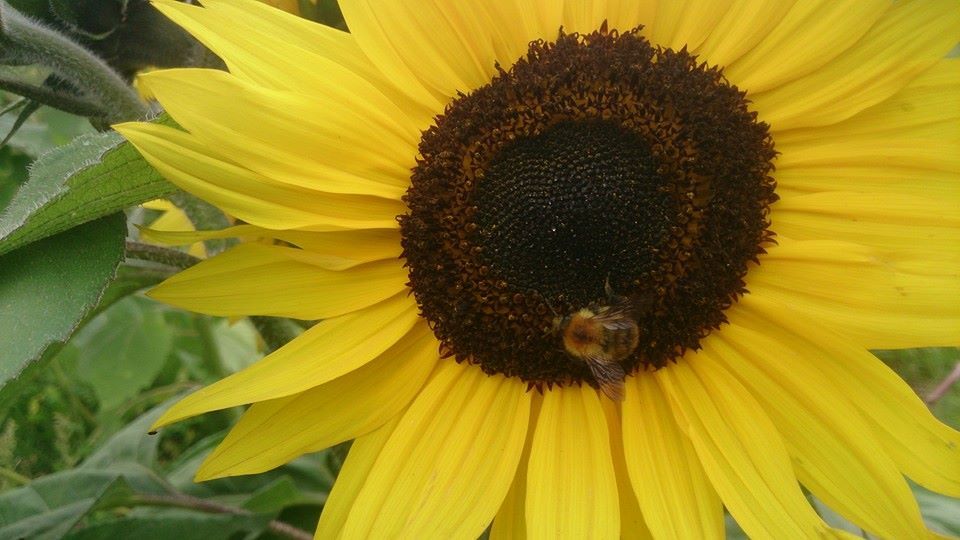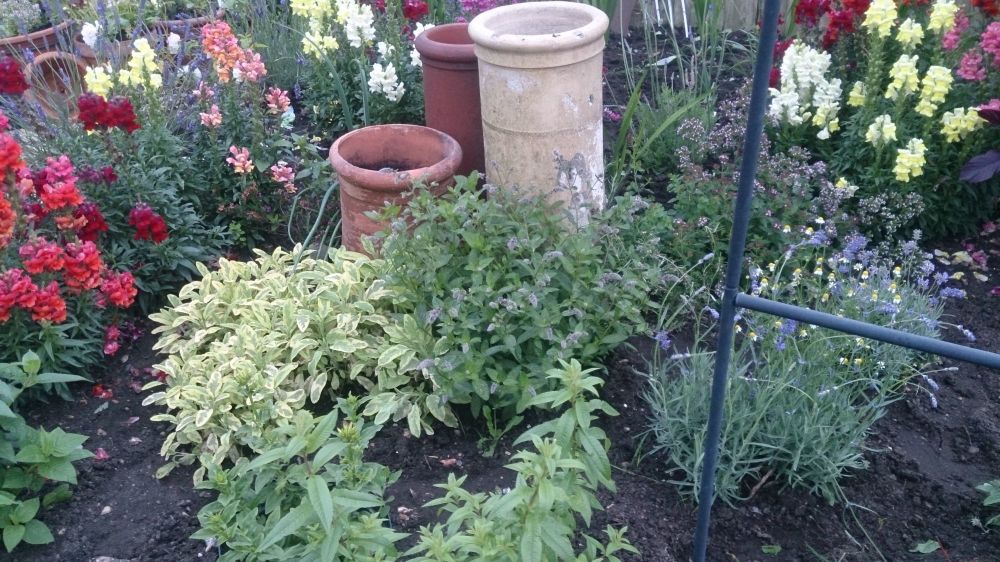When we think of bees we tend to think of big, fat fluffy bees – the bumble bees. Or the bees which live in hives and give us honey. But there is so much more to bees.
In this country we have around 280 bees. One of them is the well-known honey bee. Some of them are bumble bees, but around 250 of them are solitary bees or, the so called, wild bees. Whilst they are the largest group of bees they are the least known and least studied.
Honey bee and bumble bee colonies have a queen bee who lays all the eggs for the colony. The queen is assisted by sterile female workers who forage to bring food back and help to raise the young. There will also be some drones (male bees).
Solitary bees just consist of males and females. In many species the males emerge before the females. As there are many different solitary bees, there are also many different behaviours.
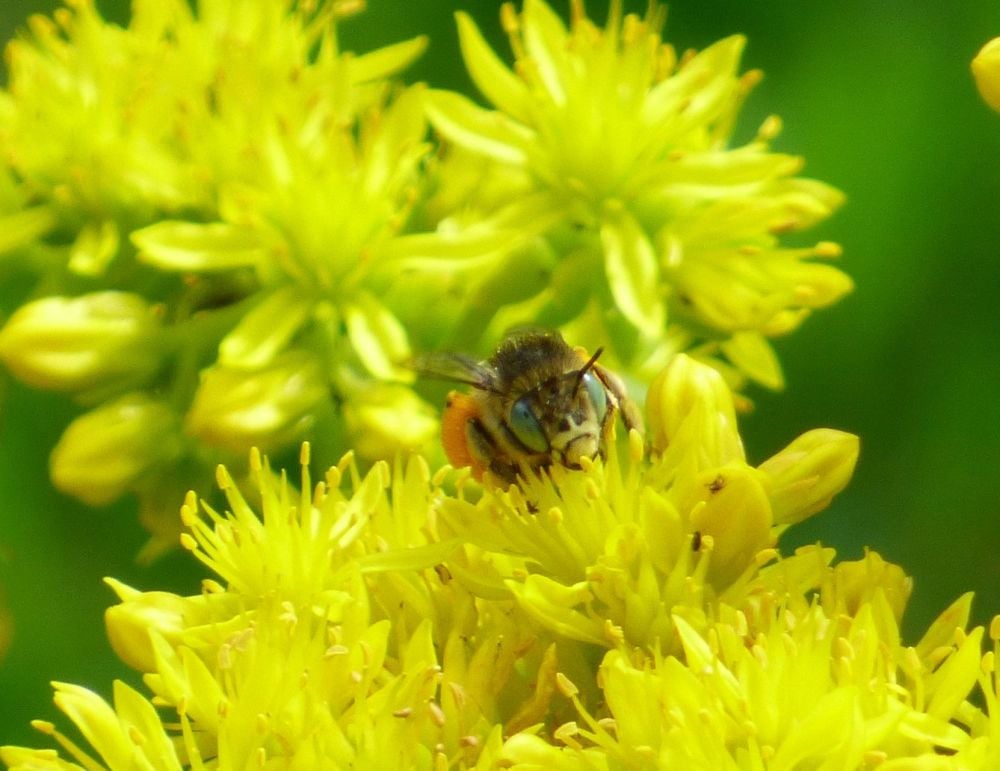
(Green eyed flower bee)
Some species of males will politely go off to the flowers the females will feed on and wait for the females to appear. Others will set up patrols amongst flowers likely to be frequented by the females and will defend their territory against other males. Yet others will hang around the nest site waiting for the females to emerge and then pounce on them!
After mating the female will find a nest site and set about building and provisioning a nest with pollen and nectar for her growing young. First she builds a cell. Then she provisions it with a ball of nectar and pollen on which she will lay an egg. The cell will be sealed and then she will build another one. Like most female worker bees (the queens are the exception) solitary bees only live for a few short weeks and she will die shortly after she has finished laying her eggs.
The eggs will hatch, the larvae will eat the food provided and then pupate. The following year the new bees will emerge to start the cycle again, never having met their parents. Hence the title “solitary” bee.
Solitary bees nest in all sorts of places. Some like hard compact ground to dig into, others sandy soil. Some like to nest in hollow stems and canes or beetle holes in old and rotting wood.
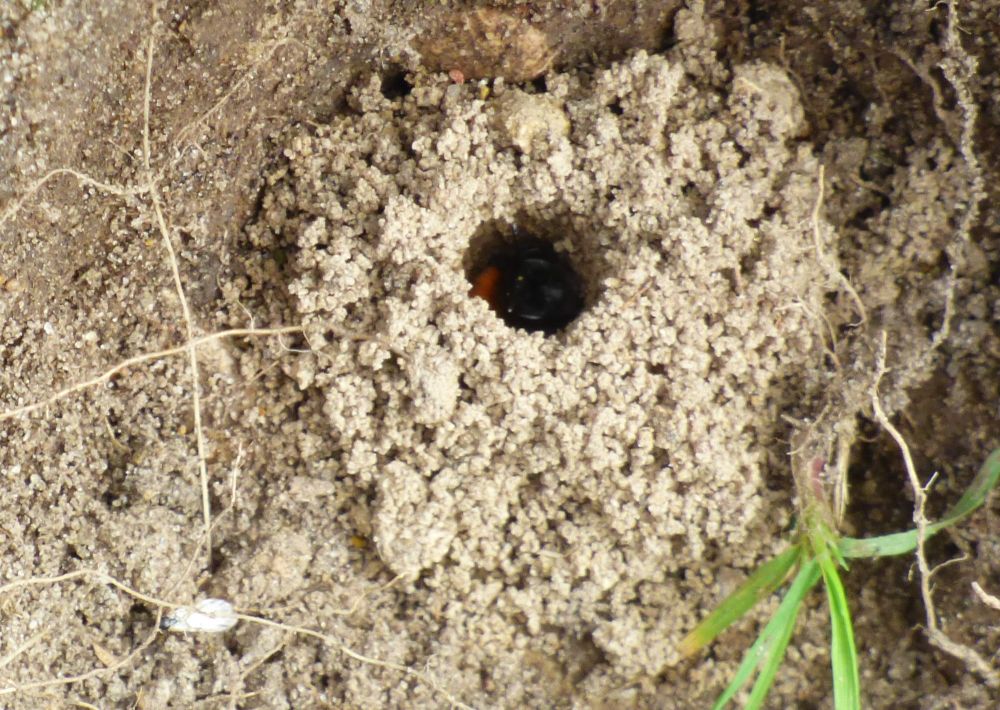
(Female bee peeking out of her nest)
Other bees will use bee hotels. Again, the different species will use different materials to seal the cells containing their young, materials such as mud, chewed up leaves and even sandy soil and small pieces of gravel.
One of my favourite bees is the leaf cutter bee. This bee likes to nest in hollow stems and so is often found in bee hotels. The female cuts semi circles from leaves, often roses but other plants are used too. She carries these back to her nest and fashions a cell which she provisions with nectar and pollen. An egg is laid on the food and then the cell is sealed up with more pieces of leaf. The female will keep on building cells along the cane until she reaches the entrance.
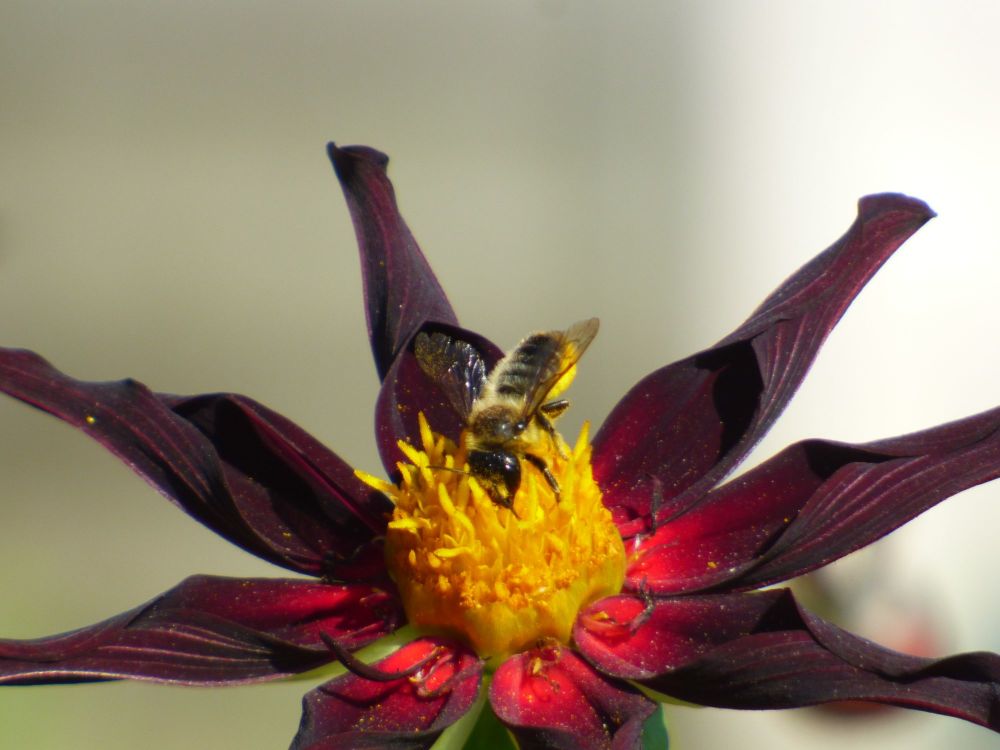
(Patchwork leaf cutter bee with her bright orange abdomen)
There are even a couple of specialist species who like to nest in snail shells. Some of these species use mud to seal the snail shell, whilst others use chewed up leaves. So next time you come across a snail shell full of mud, or a strange green material, you may have found a little bee nest.
Whilst they are called solitary bees, if the nesting conditions are right, some species of solitary bee can nest in their 100s and sometimes even 1,000s. These areas are known as nesting aggregations.
Solitary bees come in a whole range of sizes. The largest could be mistaken for small bumble bees whilst the smallest, like some of the furrow bees, are just 4mm long.
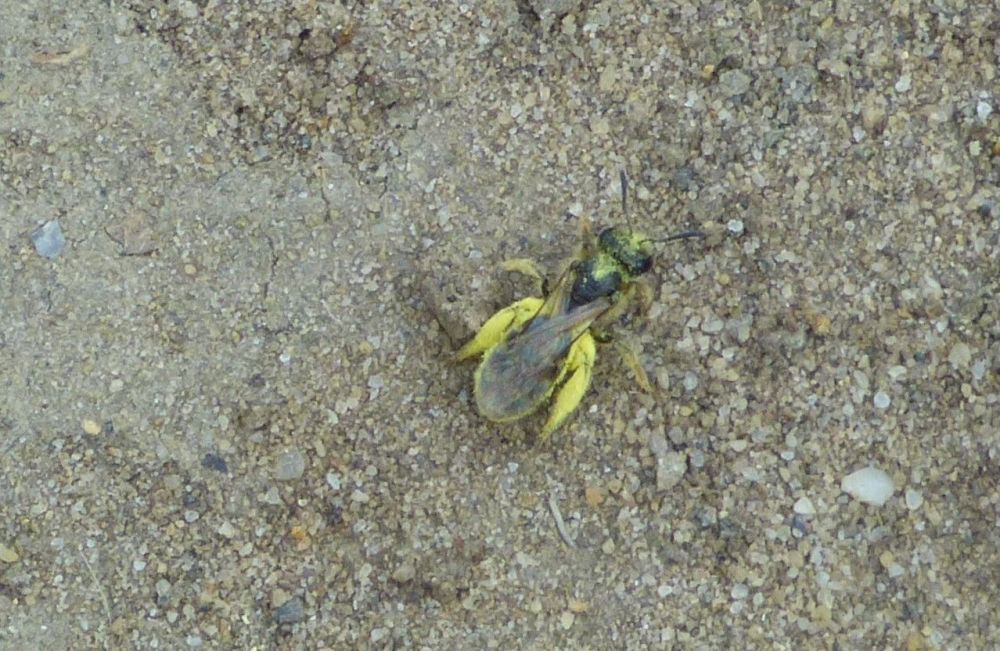
(One of the furrow bees - just 4mm long)
In the spring one of the first solitary bees to emerge is one of my favourites – the hairy footed flower bee. This solitary bee is the biggest of the solitary bees. The female is easily recognised because she emerges at a time when the only other bees flying are the large queen bumblebees and the honeybees. She is smaller than the bumble bee queens and all black with bright orange back legs. So if you see a bee which looks like a small black bumble bee you can bet it’s a hairy footed flower bee. The male is smaller and has white markings on his face, which look like a moustache! I’ve never yet managed to get a photo as he darts around all over the place – so again is quite easy to recognise.
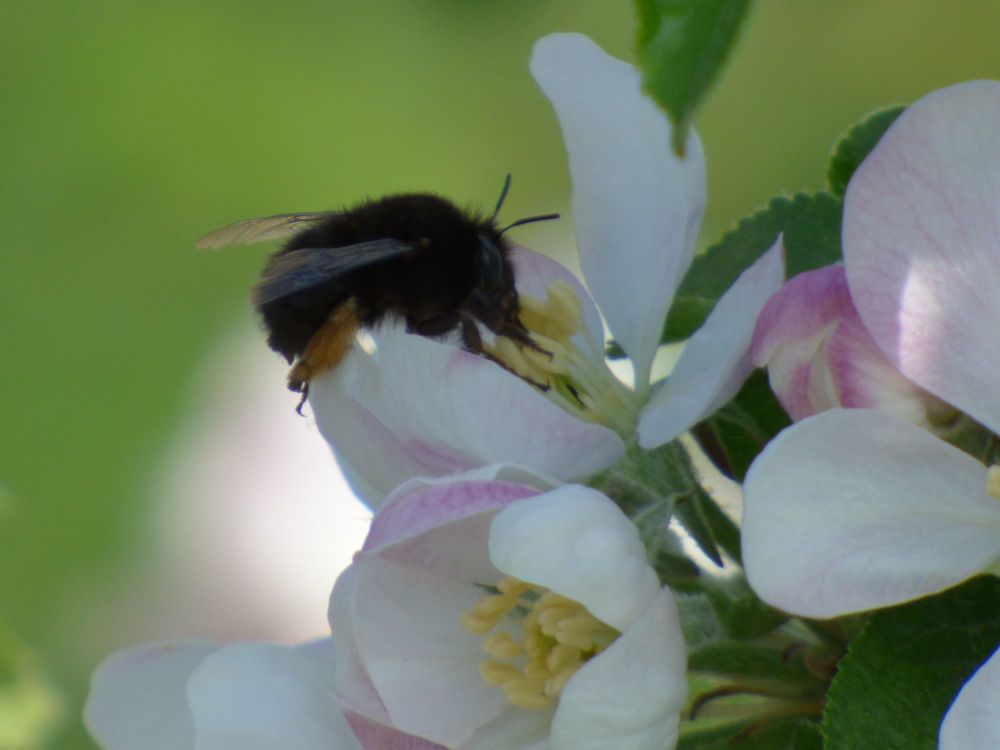
(Female hairy footed flower bee nectaring on apple blossom)
One by one over the spring and summer months into autumn the solitary bees emerge from their various nesting sites. The flight time of each species is around 6 weeks so different species of solitary bees are seen at different times of the year.
Some solitary bees will forage on lots of different plants, but some, like the ivy bee, have very particular needs. This bee’s life cycle is timed to coincide with the ivy flowering and so it is the last solitary bee to emerge each year, emerging in September. Whilst the adults will nectar on other flowers if the ivy hasn’t flowered when they emerge, they need the ivy pollen to rear their young.
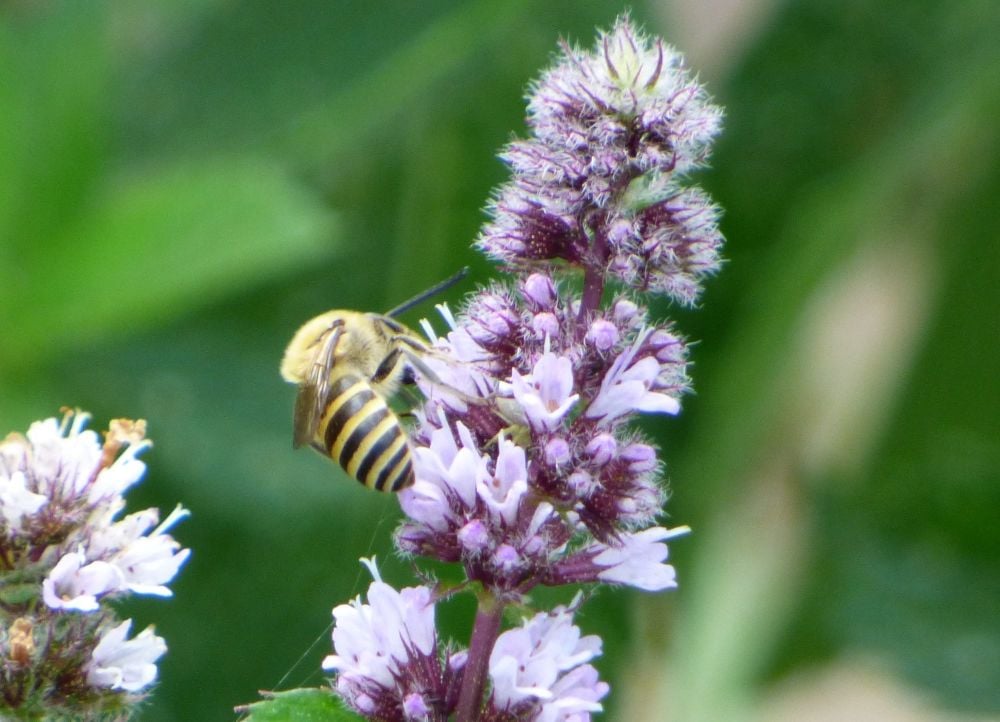
(Ivy bee feeding on mint as the ivy is yet to flower)
The ivy bee is a recent introduction into this country and was first seen near the south coast in 2001. They have gradually moved northwards.
Although I look forward to seeing the ivy bees each year, I am also a little sad as I know the “bee season” is coming to an end for this year and I’ll have to wait for my first glimpse of the hairy footed flower bees next spring.
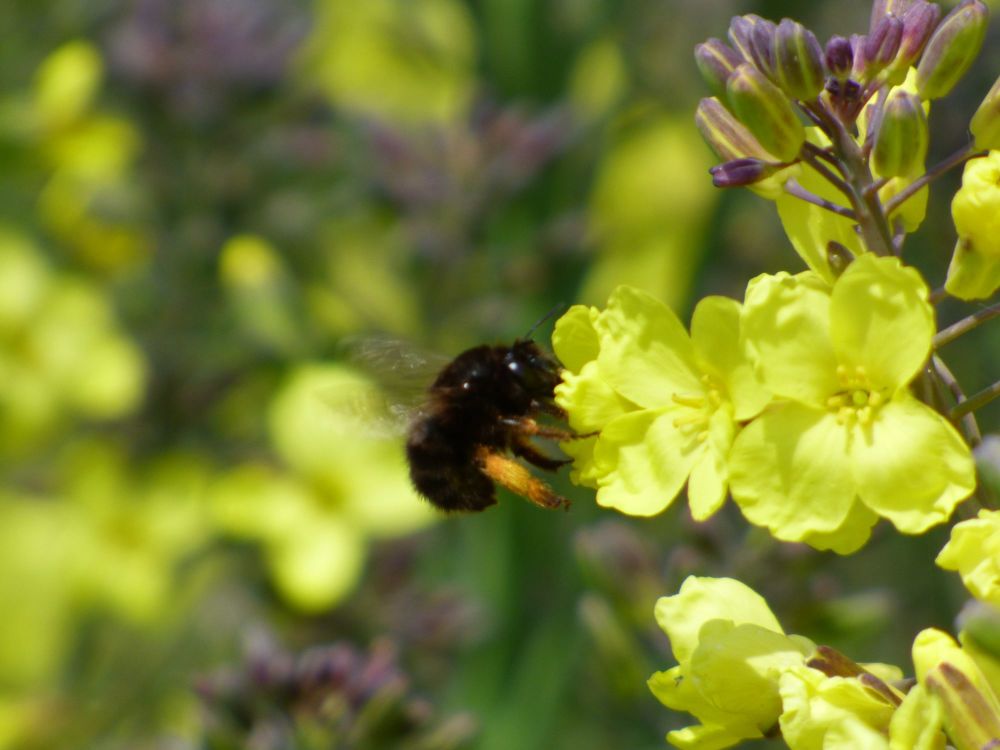
(Hairy footed flower bee on flowering purple sprouting broc)

